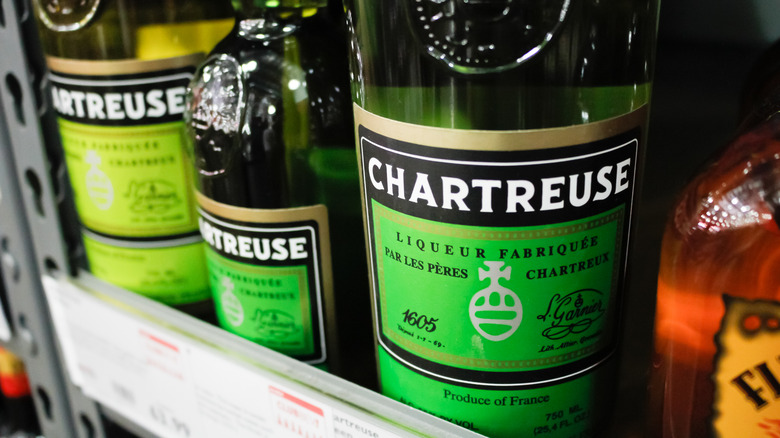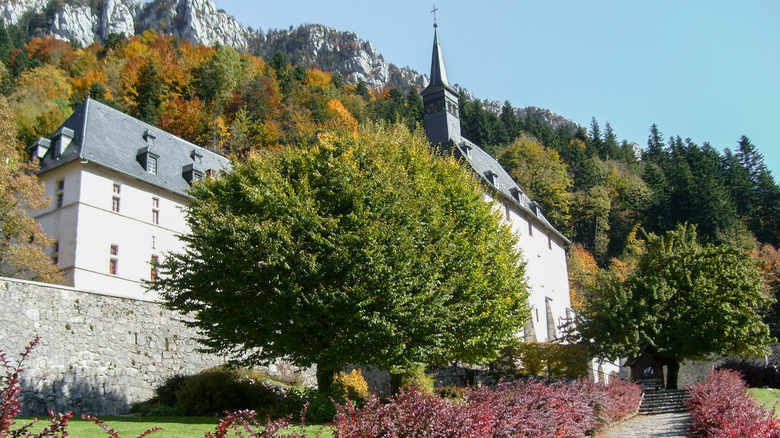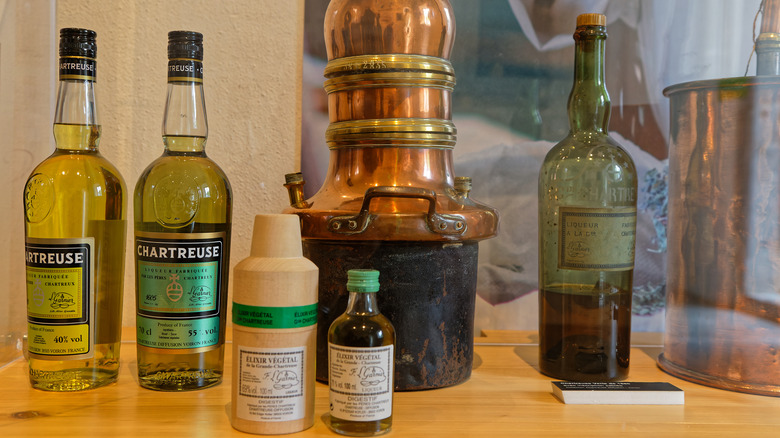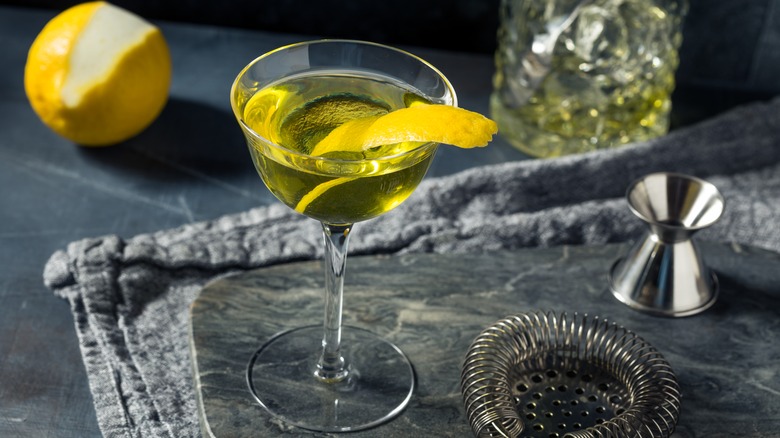The Mysterious Origins Of Chartreuse
Have you ever sipped on Chartreuse? This pale green aperitif hailing from the French Alps is known for its bright, herbal flavor defined by "minty notes, pine sap, and citrus fruits" and can be chilled and sipped straight or, more commonly, used in cocktails (via its official website). Chartreuse is a somewhat secretive elixir, containing a proprietary blend of 130 different plants, flowers, bark, roots, and spices whose exact composition is shrouded in mystery.
Much like the liqueur itself, which is available in both a green version containing 55% alcohol and a milder yellow version containing 40% alcohol, according to The New York Times, the process of making Chartreuse — as well as who it's made by — is somewhat unusual and obscure. Read on to learn more about how this enigmatic sipper came to be.
Founded in 1084
Located in the western French Alps near the city of Grenoble, the Grande Chartreuse monastery was originally settled in 1064 by a group of seven Carthusian monks (via Chartreuse). The order of monks lived in solitude, prayer, and contemplation, a self-sufficient community that, as it grew over time, expanded its operations to include livestock breeding, fish farming, forestry, and blacksmithery .
The Carthusians were also dedicated to herbalism, working over the years to create a potent medicinal tonic referred to as eau-de-vie, or "water of life." The proprietary blend of herbs, roots, and barks mixed with brandy was refined countless times over the centuries, and, in 1605, the order's monastery near Paris received a manuscript detailing the current version of this youth tonic and how it was prepared (via New York Times).
The monks continued to refine their recipe even further, developing various versions whose recipes they shared and tasted among one another. By 1764, an official recipe was settled on, and the ingredients and method of preparation were detailed in a seven-page document.
A health-promoting tonic
When the recipe for Chartreuse was standardized in 1764, the Carthusian monk Brother Charles would travel by donkey to deliver the tonic, which was promoted as a remedy for ailments such as upset stomach, sore throat, and nausea, to nearby towns and villages (via New York Times).
The ingredients of the 138-proof liquid were always shrouded in mystery, and remain so today. Of the 380-odd Carthusian monks and nuns living in the 22 charter houses scattered around the world, only two of them know the full recipe for current-day Chartreuse. Today, the liquid is available in its potent Elixir form, as well as in the Green and Yellow liqueurs that were developed by the monks in 1840. The Carthusians sell about 1.5 million bottles of the three products each year, with about half of all bottles sold in France; the United States is the brand's largest export market.
So what's in Chartreuse, after all?
As stated above, The New York Times reports that few people on earth know the full 130-ingredient recipe for the aperitif Chartreuse. But based on the drink's flavor profile and knowledge of other herbal liqueurs available in nearby countries, one can deduce that it includes herbs such as lemon verbena and fennel, spices such as mace and star anise, and fruit such as citrus peel (via North Coast Journal). The witch's brew of ingredients is steeped in neutral spirits, distilled, and then aged in oak casks for five years, according to The Spruce Eats.
Intrigued? If you want to try Chartreuse, you can sip it on ice or mix it into a variety of cocktails. The Last Word combines the pale green liquid with gin, maraschino liqueur, and lime juice, while the Martini-like Alaska calls for yellow Chartreuse, gin, and orange bitters (via Liquor). Bottoms up!



